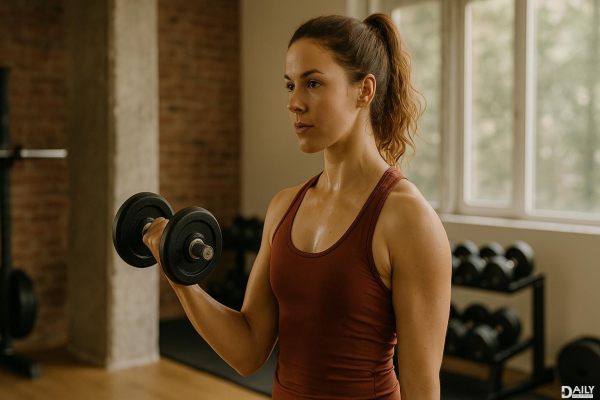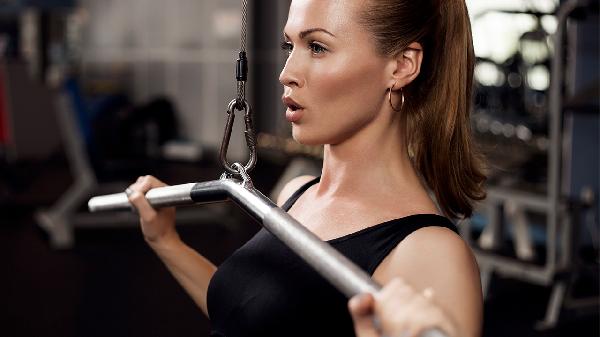If you’ve just started lifting weights or are about to dive into the world of strength training, you’re probably wondering what changes you can expect after three months of consistent effort. The good news? Three months is enough time to see some pretty noticeable transformations—both physically and mentally. From increased muscle mass and improved strength to better posture and a boost in confidence, the benefits of weightlifting are real and rewarding. But let’s break it down further to give you a clear picture of what’s in store.

One of the most obvious changes you’ll notice after three months of lifting weights is muscle growth, also known as hypertrophy. When you challenge your muscles with resistance training, tiny tears occur in the muscle fibers. As your body repairs these tears, your muscles grow bigger and stronger. While you might not look like a bodybuilder just yet, you’ll definitely see more definition, especially in areas like your arms, shoulders, and legs. Your clothes might even start fitting a little differently—in a good way.
Strength isn’t just about lifting heavier weights; it’s about how your body adapts to the demands you place on it. After three months, you’ll likely notice that everyday tasks feel easier. Carrying groceries, lifting your kids, or even moving furniture won’t feel as daunting. Your endurance will also improve, meaning you’ll be able to perform more reps or sustain longer workouts without feeling completely wiped out. This is your body’s way of saying, “Hey, I’m getting stronger!”
Weightlifting isn’t just about bulking up—it’s also about building a strong foundation. Many compound exercises, like squats and deadlifts, engage your core and back muscles, which are essential for good posture. After three months, you might find yourself standing taller and feeling more balanced. Slouching at your desk? That’s likely to become a thing of the past as your muscles learn to support your spine more effectively.
While weightlifting isn’t a magic fat-burning solution, it does play a significant role in reshaping your body. Muscle is metabolically active, meaning it burns more calories at rest than fat. Over three months, you’ll likely notice a reduction in body fat, especially if you’re pairing your workouts with a balanced diet. Your waistline might shrink, and your overall physique will look leaner and more toned. Plus, the muscle you’ve built will give your body a more sculpted appearance.
Let’s not forget the mental benefits of lifting weights. After three months, you’ll likely feel a sense of accomplishment and pride in your progress. Hitting new personal records, seeing changes in the mirror, and feeling stronger can do wonders for your self-esteem. Weightlifting also teaches discipline, patience, and resilience—qualities that spill over into other areas of your life. You’ll start to believe in your ability to tackle challenges, both in and out of the gym.
Regular exercise, including weightlifting, has been shown to improve sleep quality and reduce stress levels. After three months of consistent training, you might find it easier to fall asleep and stay asleep. The physical exertion from lifting weights helps regulate your body’s stress hormones, leaving you feeling more relaxed and balanced. Plus, the endorphin rush you get from a good workout can act as a natural mood booster.
Weightlifting isn’t just good for your muscles—it’s also great for your bones and joints. Resistance training stimulates bone growth, which can help prevent osteoporosis and other bone-related issues as you age. After three months, your joints will also become more stable and resilient, thanks to the strengthening of the surrounding muscles. This can reduce your risk of injury and improve your overall mobility.
While weightlifting isn’t a traditional cardio workout, it still benefits your heart. Lifting weights increases your heart rate and improves blood flow, which can enhance cardiovascular health over time. After three months, you might notice improvements in your resting heart rate and overall stamina. Combining weightlifting with some form of cardio, like walking or cycling, can amplify these benefits even further.
As you build muscle and increase your activity level, your body’s nutritional needs will change. After three months of lifting weights, you might find yourself feeling hungrier more often—this is your body’s way of asking for the fuel it needs to recover and grow. You’ll also likely become more mindful of what you’re eating, focusing on protein-rich foods and balanced meals to support your fitness goals. This newfound awareness can lead to healthier eating habits overall.
If you’re lifting weights at a gym or participating in group fitness classes, you’ll likely start to build connections with like-minded people. After three months, you might find yourself part of a supportive community that encourages you to keep going. Whether it’s swapping tips with fellow lifters or celebrating each other’s progress, these social interactions can make your fitness journey more enjoyable and motivating.
Three months of lifting weights can bring about significant changes in your body and mind. From increased muscle mass and strength to improved posture, fat loss, and boosted confidence, the benefits are well worth the effort. Remember, consistency is key, and everyone’s journey is different. So, keep showing up, stay patient, and enjoy the process. Your body will thank you!
























